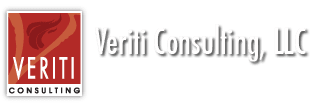
Netflix has a series getting a lot of buzz entitled Ozark, which is about a mild-mannered financial advisor forced to launder Mexican drug cartel money in the Ozarks region of Missouri.
In order to save his own life, Marty offers to help move the cartel’s operation to the Ozarks, where they can supposedly move money without the watchful eye of the Drug Enforcement Administration (“DEA”) constantly looming over them. Marty’s job is to prove his proficiency to the cartel, by legally transferring $8 million to their accounts.
The basic premise is that he’s layering dirty money. He has a cash flow, which includes both revenue and expenditures.
- He can under-value in case of revenue. So that there’s now room to layer in the dirty money to meet ‘normal’ revenue streams or
- He can over-value in case of expenditure. Which, again, makes room for the layer of dirty money.
He is also laundering money by using businesses that deal largely in cash, this allows the cash to be layered in without any discrepancies.
Each episode the audience gets pulled into the dangerous, high-stakes world of white-collar crime and money laundering.
What is Money Laundering?
Money laundering is the process of running the illegal gains from criminal acts through financial systems to disguise their origin and make them appear to be legitimate and, therefore, spendable funds. Money laundering can be linked to any crime that generates significant profit such as drug trafficking, arms smuggling, extortion, fraud, racketeering, insider trading, tax evasion and other crimes.
The money laundering process involves these three basic steps that are known as:
- Placement — physically placing illegal cash in banks or purchasing goods with it such as art, precious metals, real estate, gems or jewelry and so forth.
- Layering — the act of separating the proceeds from their criminal origins through complex moves such as wire transfers; conversion of cash to financial instruments; sale of high value goods such as art, precious metals, etc.; and real estate investments.
- Integration — making the wealth from the illegal proceeds appear legitimate. Using funds on deposit in foreign financial institutions as security for domestic loans is a favorite technique. Another method is over-billing or producing false invoices for goods allegedly sold across borders.
In the past you would have to rely on the collusion of others to accomplish most laundering schemes, but these days we have the anonymity of internet payment services. The sheer volume of transactions (legal and otherwise) make inspection a huge challenge for the financial industry and regulators. The Internet, offshore banks and shell companies provide an environment for “layering.”
Educate Yourself
Take some time to review the following websites and learn about money laundering, particularly about the basics of this crime and its drastic economic and social effects.
- The U.S. Treasury’s Financial Crimes Enforcement Network site is an excellent resource.
- Here’s a money laundering news alert site from the Association of Certified Anti-Money Laundering Specialists (“ACAMS”), a professional association.
Keep in mind that money laundering is a crime that affects us all as individuals, business people and responsible citizens. Be aware of how launderers are adapting to the new technologies and opportunities of the 21st century.
If you have concerns or questions about topics such as money laundering or any other financial fraud, you may want to look into Fraud Investigation Services by a CFE.
________________________________________________
Look to the best and most trusted in financial forensics and fraud investigation.
Call Veriti Consulting today! Contact us at (877) 520-1280.
Read related articles:
- Fraud News September 2017: Campaign, Tax, Investment Fraud & More
- Health Care and Finance Fraud Roundup – August 2017
- raud News October 2017: Health Care Fraud, Cyber Crime & More

